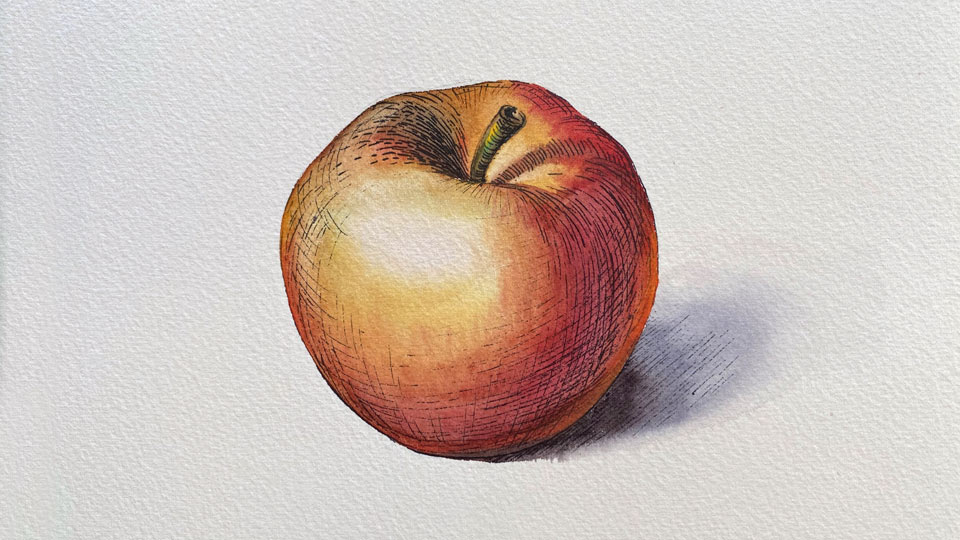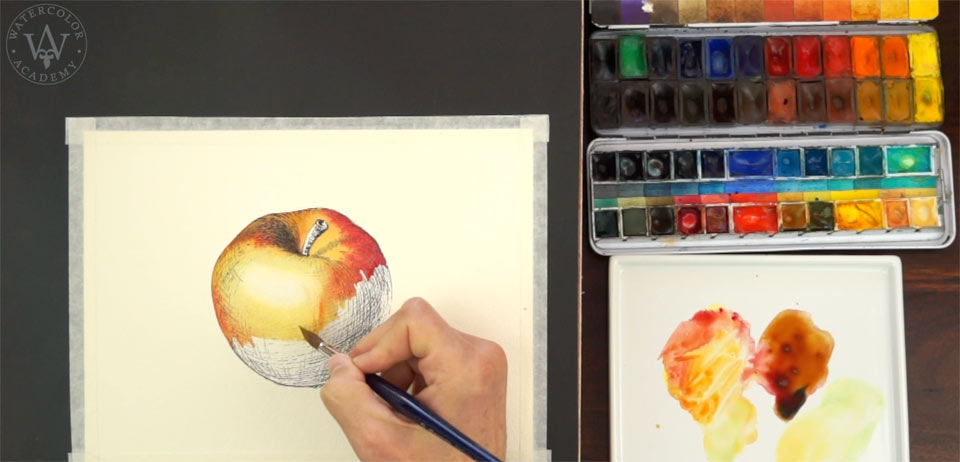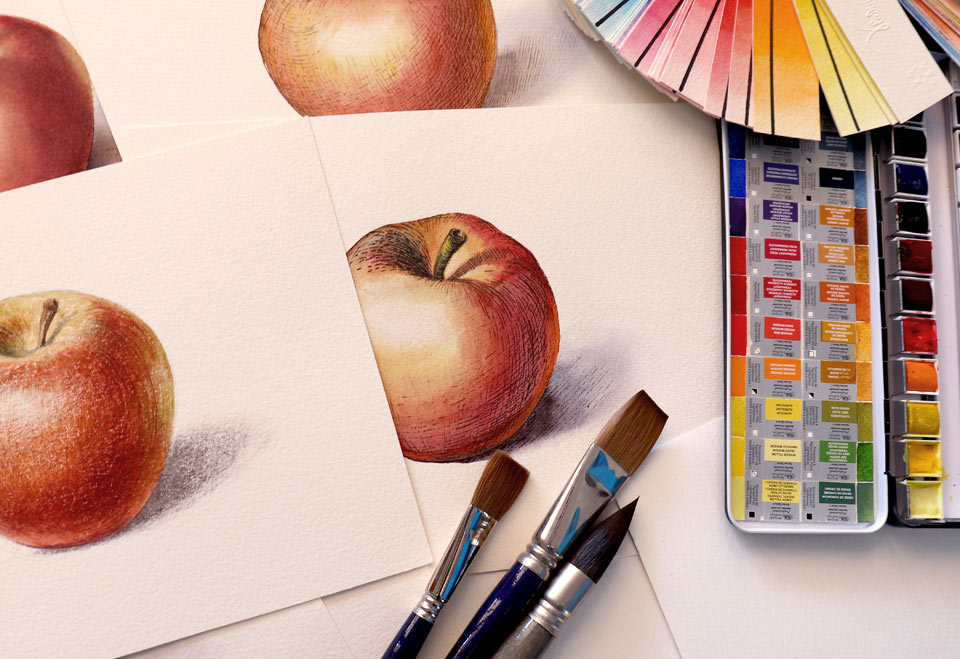A self-study, self-paced course where you can learn how to paint in watercolor by watching video lessons and doing assignments
$297 USD
ENROLL NOWA self-study, self-paced course where you can learn how to paint in watercolor by watching video lessons and doing assignments
$297 USD
ENROLL NOWOne-to-one, unlimited and custom-tailored to your skills and needs Personal Tutoring by the Watercolor Academy teachers
$997 USD
ENROLL NOWVideo lesson by Vladimir London
In this video, you will discover how to paint in watercolor using the pen-and-wash technique.
For the purpose of demonstrating the pen-and-wash painting technique, I will use a waterproof pen to complete a sketch of an apple on watercolor paper.

In this case, I am using a black CD marker which is permanent and quite thin; the reason why I need a waterproof pen is because a liquid watercolor paint will be applied on top of the pen marks, and I want these pen marks to stay in place without dissolving. You do not have to use permanent CD markers – instead, an under-drawing can be made with water-resistant inks that contain shellac. You can also use a ball pen or a graphite pencil, as long as its marks will stay visible under the paint layers. Before the discovery of graphite, the old masters also used a lead stylus to make drawings on paper – this is called 'metal point' because actual metal was used to make drawing marks.

The topic of how to draw in metal paint is fully explained and demonstrated in the Drawing Academy online course. With the linear drawing in place, I can begin painting in watercolor. I can do it using the 'wet-on-dry alla prima' technique, which is fully explained in one of the previous video lessons about painting techniques. I have to say that alla prima is not the only way to produce pen-and-wash artworks.; in fact, you can use any watercolor technique you like. Painting in multiple glazing layers, wet-on-dry, or wet-into-wet, or 'dry brush on moist' is also suitable for adding colors on top of the linear drawing.
The biggest advantage of this technique is that the design and the composition is fully solved at the drawing step. That is why, when painting in watercolor, an artist can concentrate on colors whilst paying less attention to the drawing. With this technique, you may find that there is no pressure to be precise and follow exact outlines and contours of the drawing. As long as required colors and tonal values are applied somewhere approximately, an artwork will always have a very defined drawing, because it is already done in pen.

Nevertheless, I place the paint within precise outlines of an apple because it is painted onto a white background. Should I have another creative task of making an artwork on a colored background, I might use a simple gradated wash, as seen in a previous video lesson. In such a wash, there would be no need to obey the border of an apple, but it would be totally fine to produce a smooth gradation of colors, fusing the background and colors of an apple together. Without an under-drawing, such a gradated wash would look totally abstract. However, the linear drawing, showing up through the layer of paint, would make such an artwork impressionistic but figurative and recognizable.
The history of art includes many examples of pen-and-wash masterpieces, because this technique is very rapid, and comes with well-defined drawing that is highlighted with a few colors. For example, some artworks by Leonardo da Vinci and Albrecht Dürer include transparent paint being placed on top of a visible under-drawing. The Principessa portrait, possibly by Leonardo da Vinci, features such a technique. The under-drawing is done in silver point on a specially-prepared surface of vellum and transparent washes of paint are applied on top.
You can learn how to draw in silver point, which is drawing with pure silver metal, in multiple video lessons of the Drawing Academy course.
I like the pen and wash technique and use it often when traveling, because it is a fast way of making well-detailed but colorful artworks from life. A linear sketch can be done very fast, especially on a small scale, and I can easily include as many details as I feel necessary. When a pen sketch is complete, applying colorful washes in watercolor is only a matter of a few minutes. It is a very handy way of capturing the impression on the location, and then using such preliminary sketches for reference when making big-scale artworks in the studio.
A self-study, self-paced course where you can learn how to paint in watercolor by watching video lessons and doing assignments
One-time payment - Lifetime membership
$297 USD
One-to-one, unlimited and custom-tailored to your skills and needs Personal Tutoring by the Watercolor Academy teachers
One-time payment - Lifetime membership
$997 USD